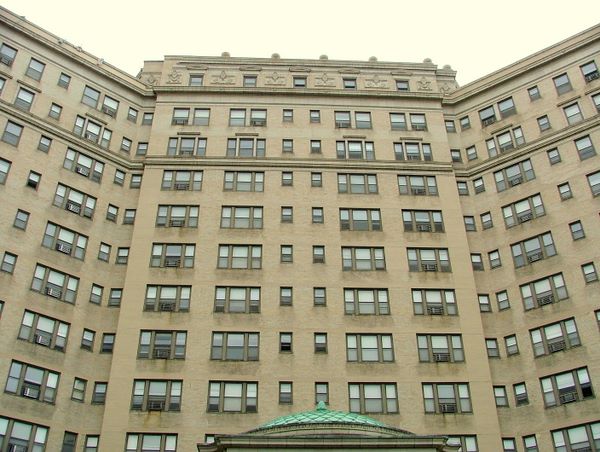|
Hotel Windermere East was designed as a companion to the original Windermere Hotel, built in 1892 across South Cornell. The two hotels were connected by two tunnels beneath South Cornell, one for guests and one for service. The facade, a terra cotta created with metal mixed clay, duplicates stone. The building is curved, with a U-shape, allowing maximum views of Jackson Park and the Museum of Science and Industry to the south.
Inside the hotel was the Crystal Ballroom and the Anchorage Restaurant, two of the most prominent public spaces on the South Side. The hotel itself has been referred to in Philip Roth’s 1969 novel, Letting Go; Edna Ferber’s 1947 novel A Peculiar Treasure; and Richard Stern’s 1978 novel, Natural Shocks.
For a grand entrance, a highly-detailed vestibule is connected to the foyer. The public areas are detailed in marble, terra cotta, bronze, paneling, and ornamental plaster.
Originally each upper floor of the building had an identical plan. Over the years, rooms have been combined to create larger apartments, and all of the hotel guest rooms have been appended to apartments, but many original features in these apartments remain. The University of Chicago purchased the building in 1973, selling it to private developers in 1980. Since 1980, much work has been done to restore the interior of the building.
The architects, Rapp and Rapp (CW Rapp and George Rapp), designed most of the movie houses for the Balaban and Katz chain, including the Uptown Theater and the Chicago Theater. Other buildings designed by Rapp and Rapp included the Oriental Theater and Masonic Temple. Hotel Windermere East is their most prominent work outside of the theater field.
|


|